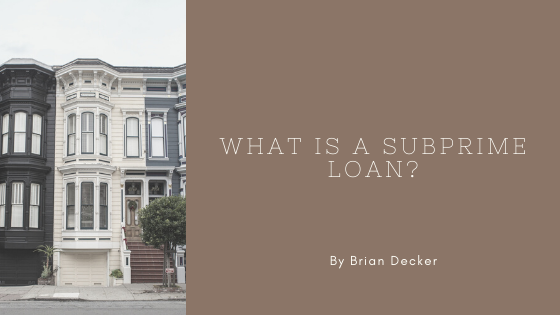Subprime loans are a type of financing offered by banks and lenders who charge higher than average interest rates and fees. In most cases, lenders offer subprime loans to borrowers who have poor credit and/or have had a recent derogatory event. Lenders make this type of financing available to consumers who have more risk factors than borrowers who have good credit to help protect the lenders’ finances.
Cost of Subprime Loans
How much a borrower pays for a subprime loan depends on many factors. First of all, interest rates and fees vary by lender. What lenders charge for subprime financing is not set in stone. A person’s credit score, debt-to-income ratio, total income, type of employment, and assets also affect how much a borrower can expect to pay.
How to Get the Best Rate on Subprime Loans
The proven way to get the best interest rates and terms on subprime financing is to shop around. Since there is not a universal cost that each lender must charge, borrowers should check with multiple banks and financial organizations to see who is offering the best rate. Fortunately, the internet has made it easy to research multiple lenders.
What to Look For in Subprime Loans
Many mortgage lenders offer subprime loans for borrowers with less than ideal credit. Although this is a good option for those with a few detrimental factors on their credit reports, it can cost tens of thousands of dollars more over the life of the mortgage.
Interest rates are much higher on subprime mortgages. In some cases, they can be two to three points higher than the prime rate. Additionally, lenders often charge more in costs and fees on subprime mortgages. Again, it pays to shop around to find lenders who are offering the lowest rates and fees.
Are Subprime Loans Predatory?
Though some people may perceive subprime financing as predatory lending, others can attest that these loans present an opportunity for some borrowers to gain access to capital that is not afforded to them using traditional financing. Subprime loans were previously given a rad reputation due to the type of loan structure being offered to consumers in the early 2000s. These loans were only fixed for a short period of time, usually 2 years and then would dramatically increase in rate. To further worsen the situation the prepayment penalties were often longer than the period of time the rate was fixed for. This has long since been corrected and that practice is now illegal
Since subprime loans come with higher interest rates, fees, and longer repayment terms, the best way to find out whether or not a subprime loan is the right move is to speak with a reputable financial advisor.

